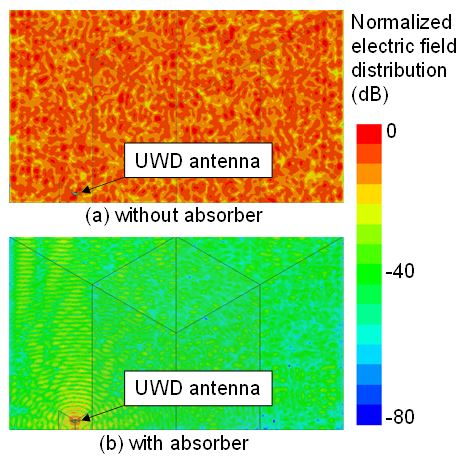Research for spacecraft application of ultra-light electromagnetic wave shielding material
JAXA Supercomputer System Annual Report February 2021-January 2022
Report Number: R21EDG10102
Subject Category: Research and Development
- Responsible Representative: Koji Yamanaka, Director, Research and Development Directorate Unit 1
- Contact Information: shiamda shuhei, JAXA(shimada.shuuhei@jaxa.jp)
- Members: Shuhei Shimada, Sho Muroga
Abstract
Applying wireless to spacecraft to improve safety and reduce man-hours. Wireless application emits unnecessary radio waves.In this study, we analyze the electromagnetic field when wireless application and ultra-light electromagnetic wave shielding material are used in a metal enclosed space.This research aims to reduce unnecessary electromagnetic field radiation by properly arranging electromagnetic wave shielding materials.
Reference URL
N/A
Reasons and benefits of using JAXA Supercomputer System
Purpose: Analyzing the electromagnetic field when wireless application and ultra-light electromagnetic wave shielding material are used in a metal enclosed space.
Necessity: When performing electromagnetic field analysis in a large-scale space such as inside a satellite, many calculations are required and cannot be calculated with a conventional PC. Therefore, the analysis was performed with JSS3, which is capable of large-scale electromagnetic field analysis.
Achievements of the Year
Analyzed the electromagnetic field distribution when multiple UWB antennas and ultra-light electromagnetic wave shielding materials were placed in a metal closed space using JSS3.
Without shielding material: Electromagnetic waves radiated from UWB and reflected waves on the wall surface interfered, suggesting a decrease in communication speed between UWBs.
With shielding material: Analysis reveals that the effect of reflected wave interference is reduced by absorbing part of the radio waves.
In the future, we will analyze the material properties, arrangement, and dimensions of shielding materials that absorb only unnecessary reflections and can use multipath.In addition, we will compare and verify with the experimental results.
Publications
N/A
Usage of JSS
Computational Information
- Process Parallelization Methods: N/A
- Thread Parallelization Methods: N/A
- Number of Processes: 1
- Elapsed Time per Case: 24 Hour(s)
JSS3 Resources Used
Fraction of Usage in Total Resources*1(%): 0.00
Details
Please refer to System Configuration of JSS3 for the system configuration and major specifications of JSS3.
| System Name | CPU Resources Used(Core x Hours) | Fraction of Usage*2(%) |
|---|---|---|
| TOKI-SORA | 0.00 | 0.00 |
| TOKI-ST | 0.00 | 0.00 |
| TOKI-GP | 0.00 | 0.00 |
| TOKI-XM | 0.00 | 0.00 |
| TOKI-LM | 0.00 | 0.00 |
| TOKI-TST | 1327.26 | 0.03 |
| TOKI-TGP | 0.00 | 0.00 |
| TOKI-TLM | 0.00 | 0.00 |
| File System Name | Storage Assigned(GiB) | Fraction of Usage*2(%) |
|---|---|---|
| /home | 5.00 | 0.00 |
| /data and /data2 | 0.00 | 0.00 |
| /ssd | 50.00 | 0.01 |
| Archiver Name | Storage Used(TiB) | Fraction of Usage*2(%) |
|---|---|---|
| J-SPACE | 0.00 | 0.00 |
*1: Fraction of Usage in Total Resources: Weighted average of three resource types (Computing, File System, and Archiver).
*2: Fraction of Usage:Percentage of usage relative to each resource used in one year.
ISV Software Licenses Used
| ISV Software Licenses Used(Hours) | Fraction of Usage*2(%) | |
|---|---|---|
| ISV Software Licenses(Total) | 0.00 | 0.00 |
*2: Fraction of Usage:Percentage of usage relative to each resource used in one year.
JAXA Supercomputer System Annual Report February 2021-January 2022



